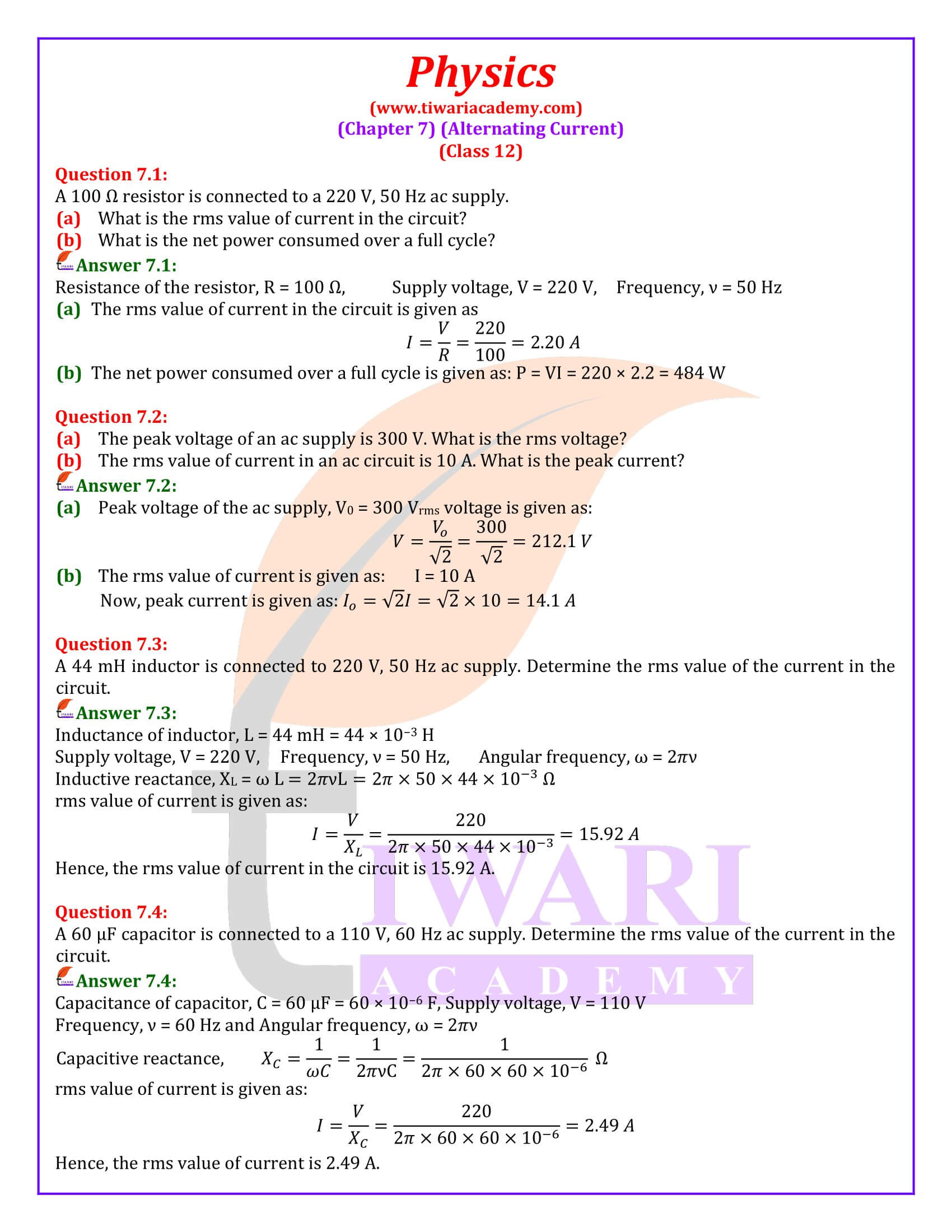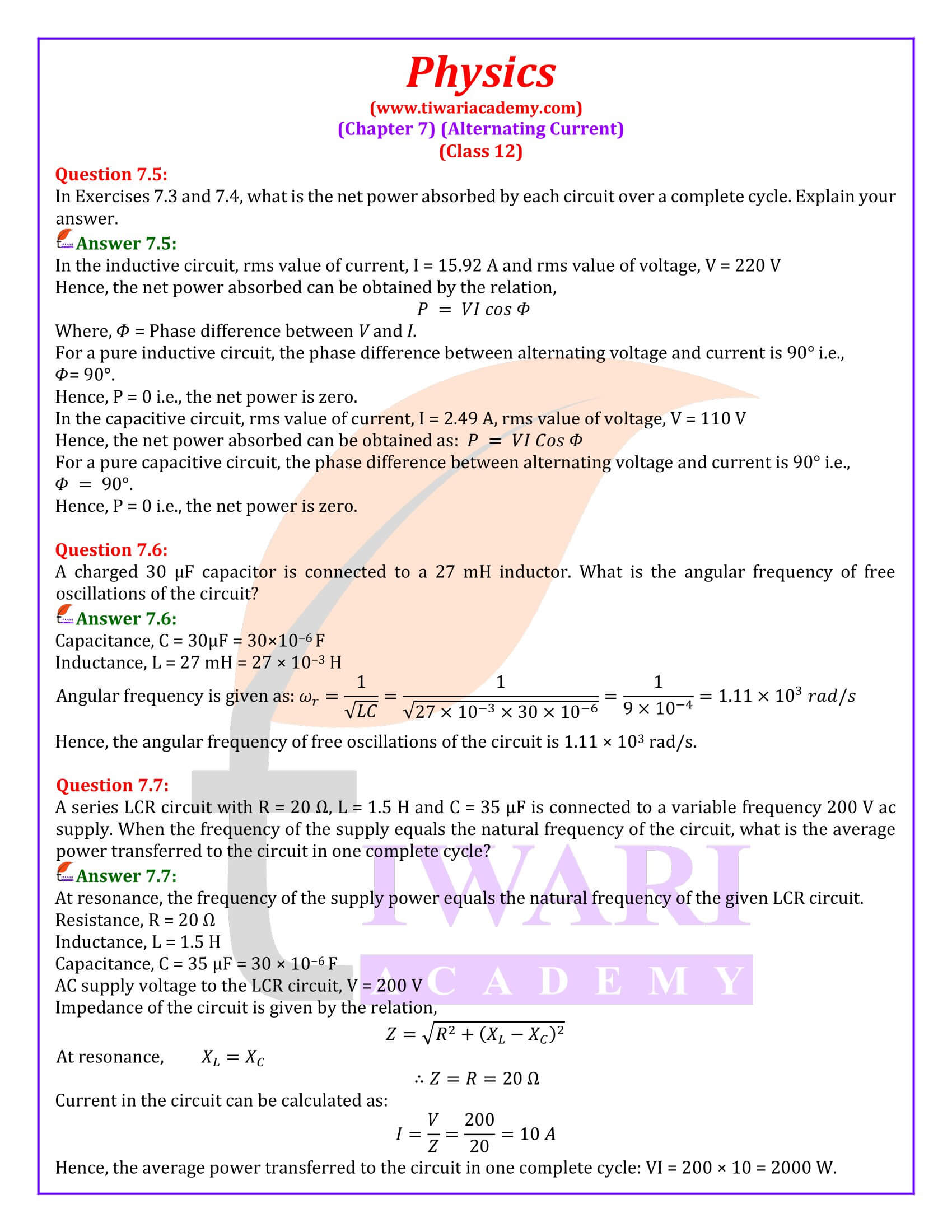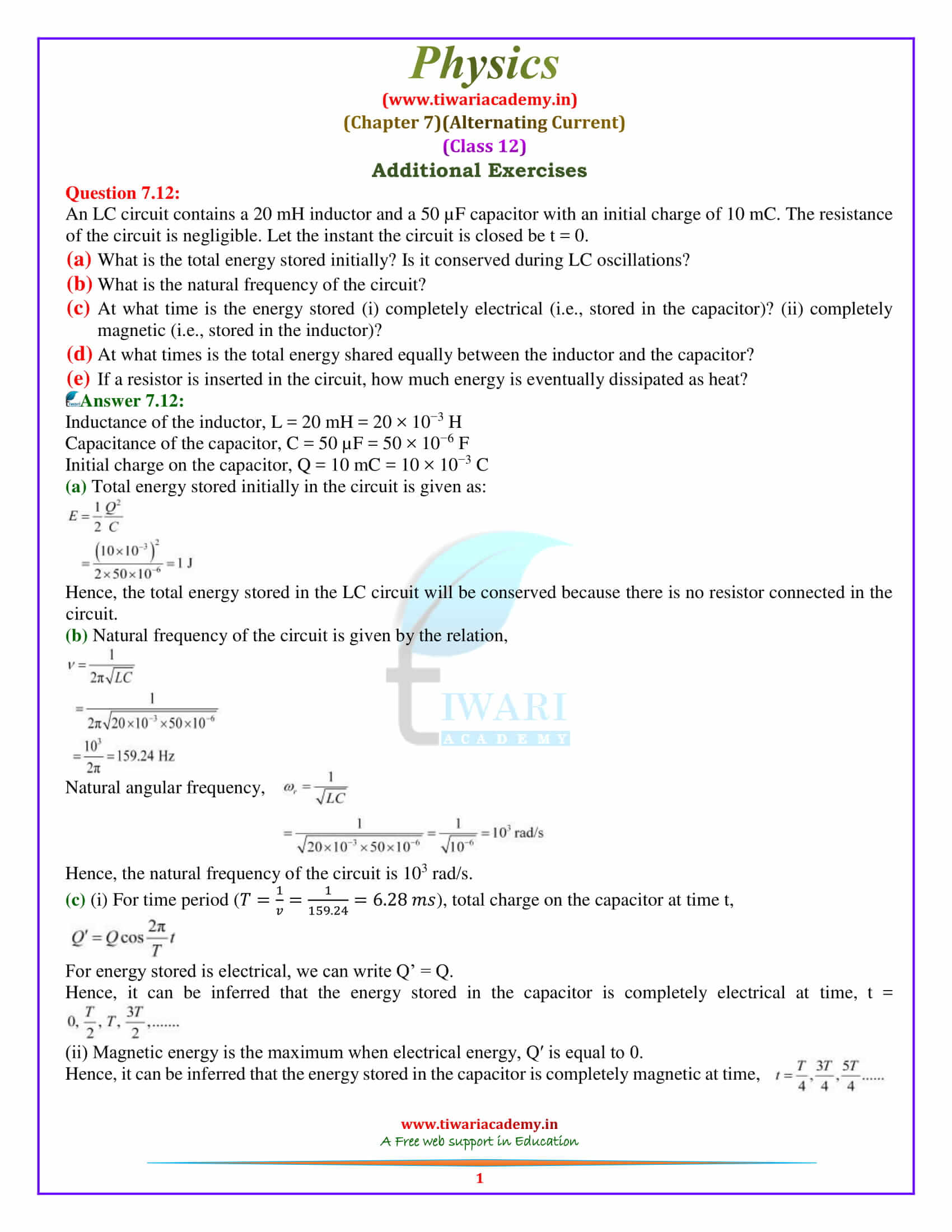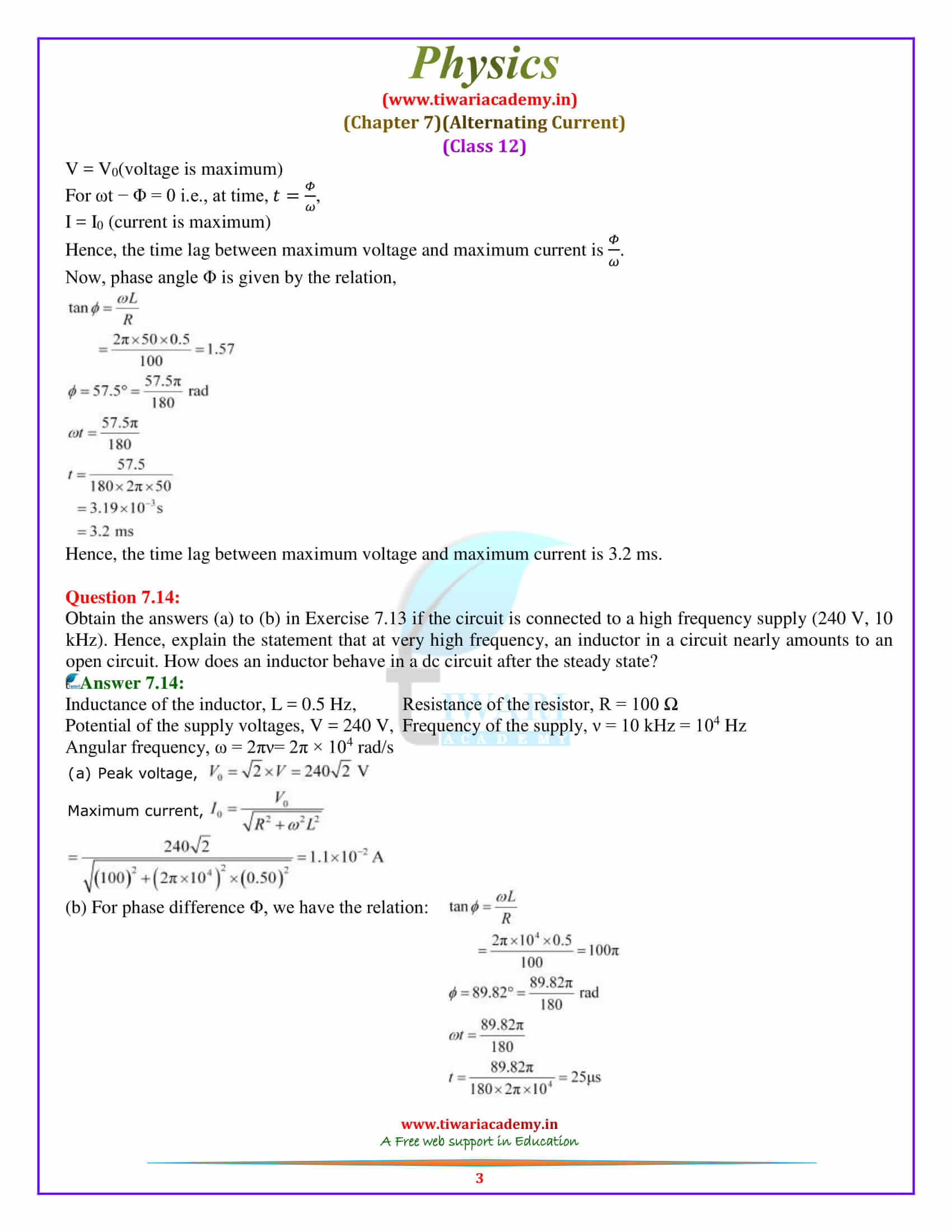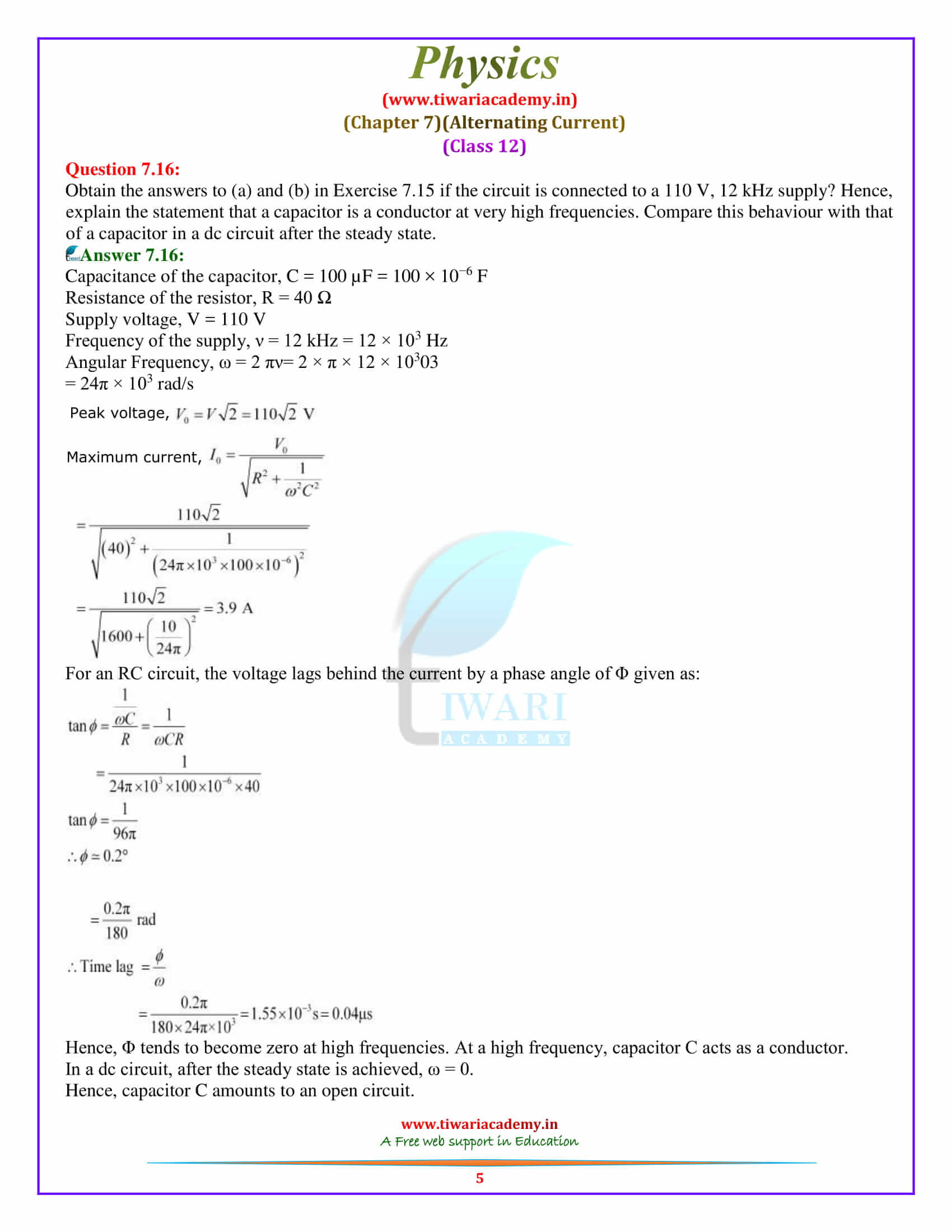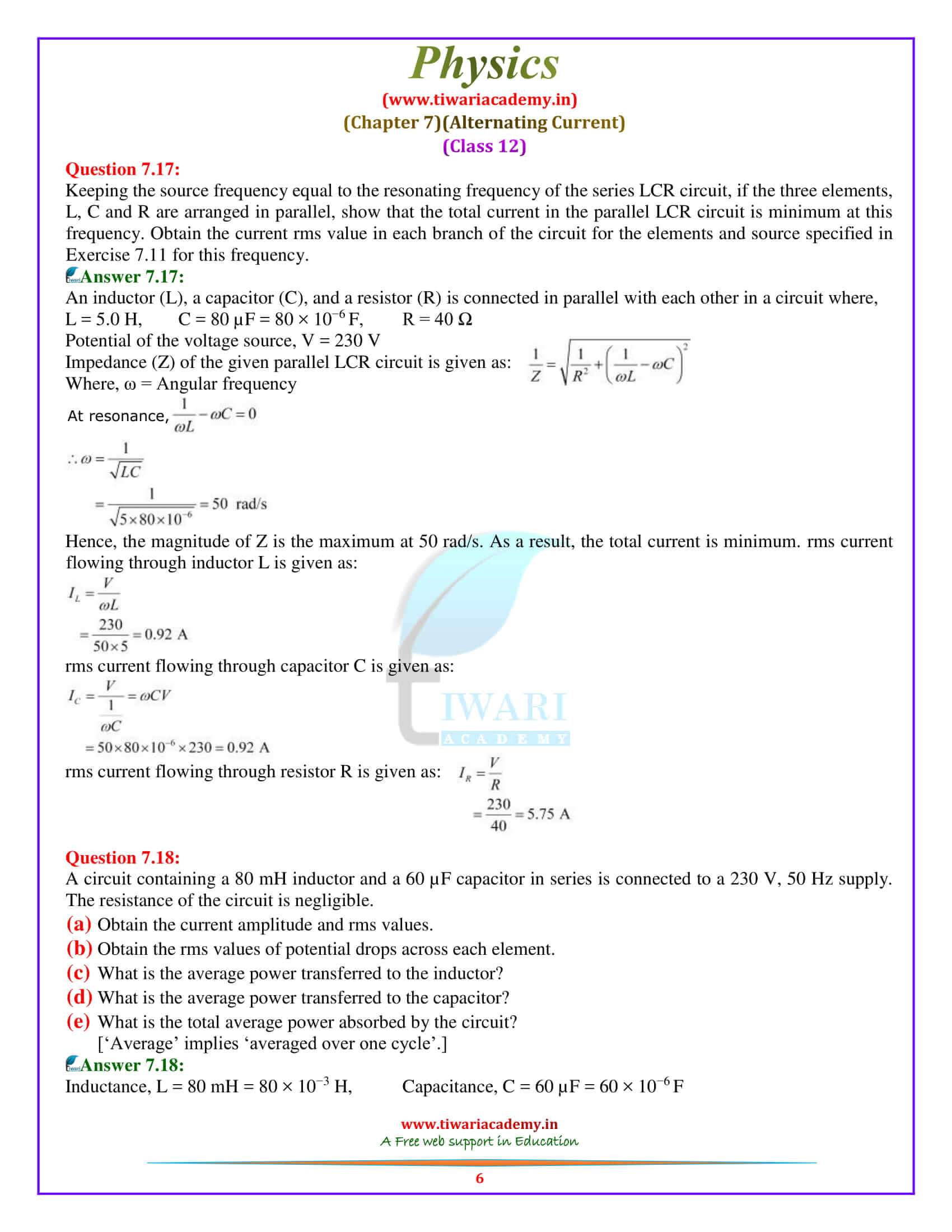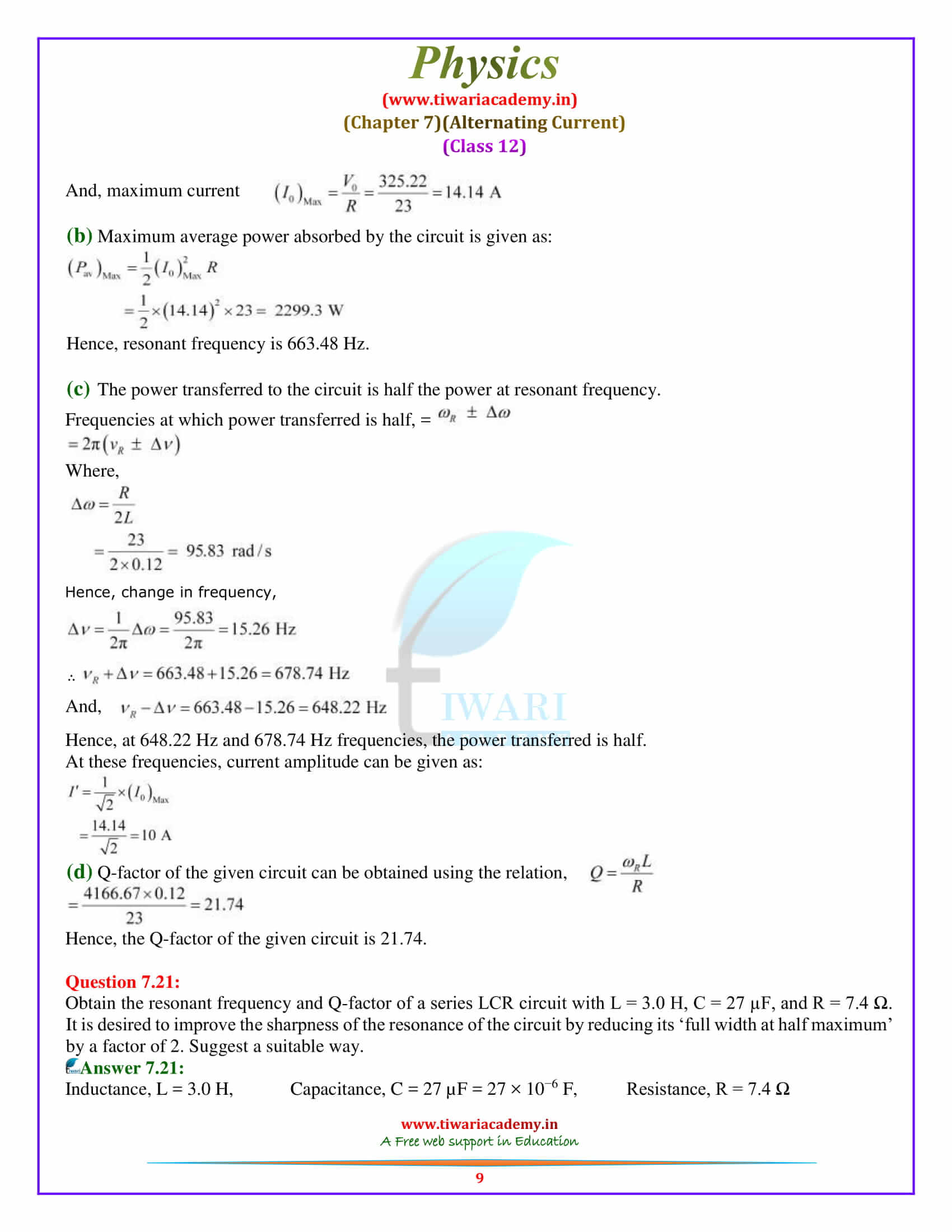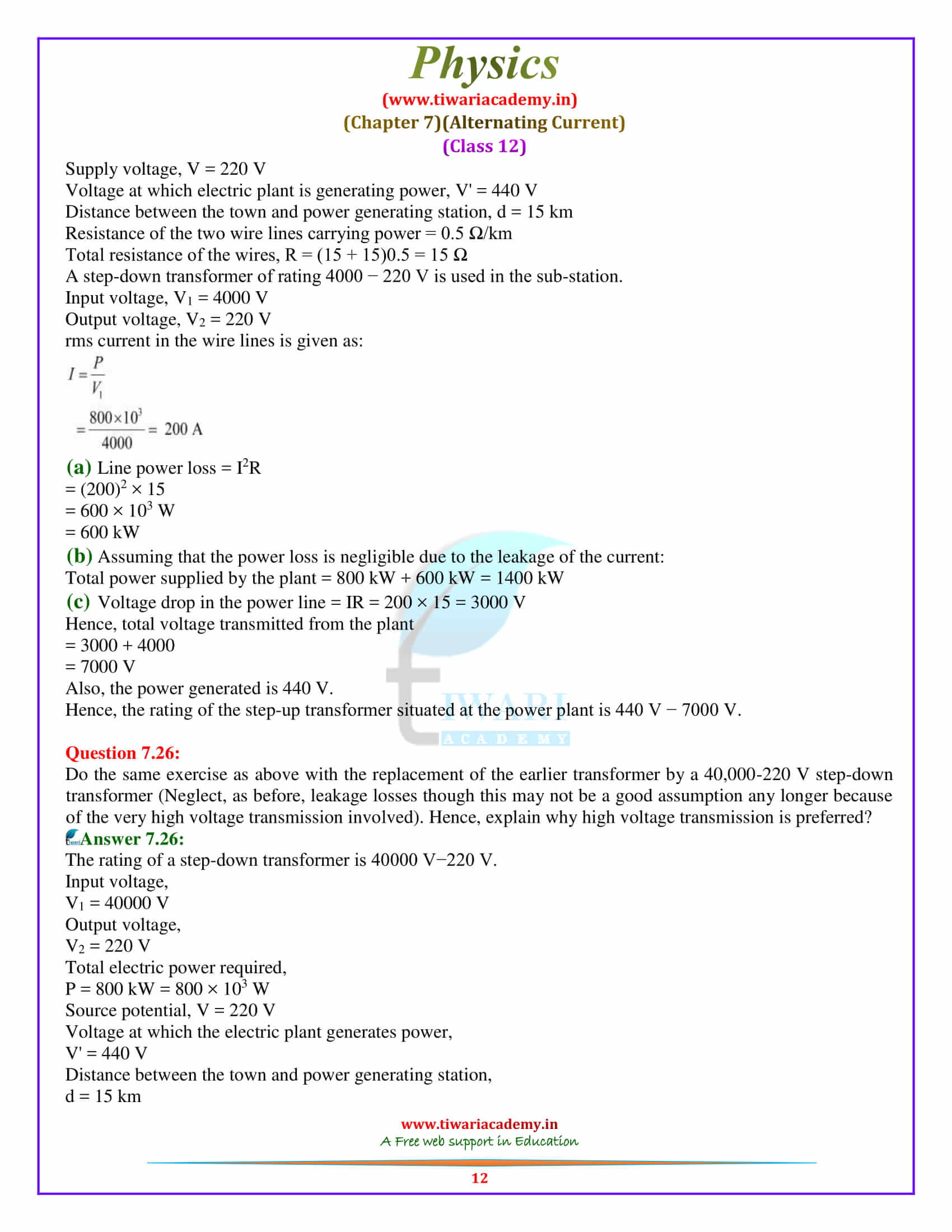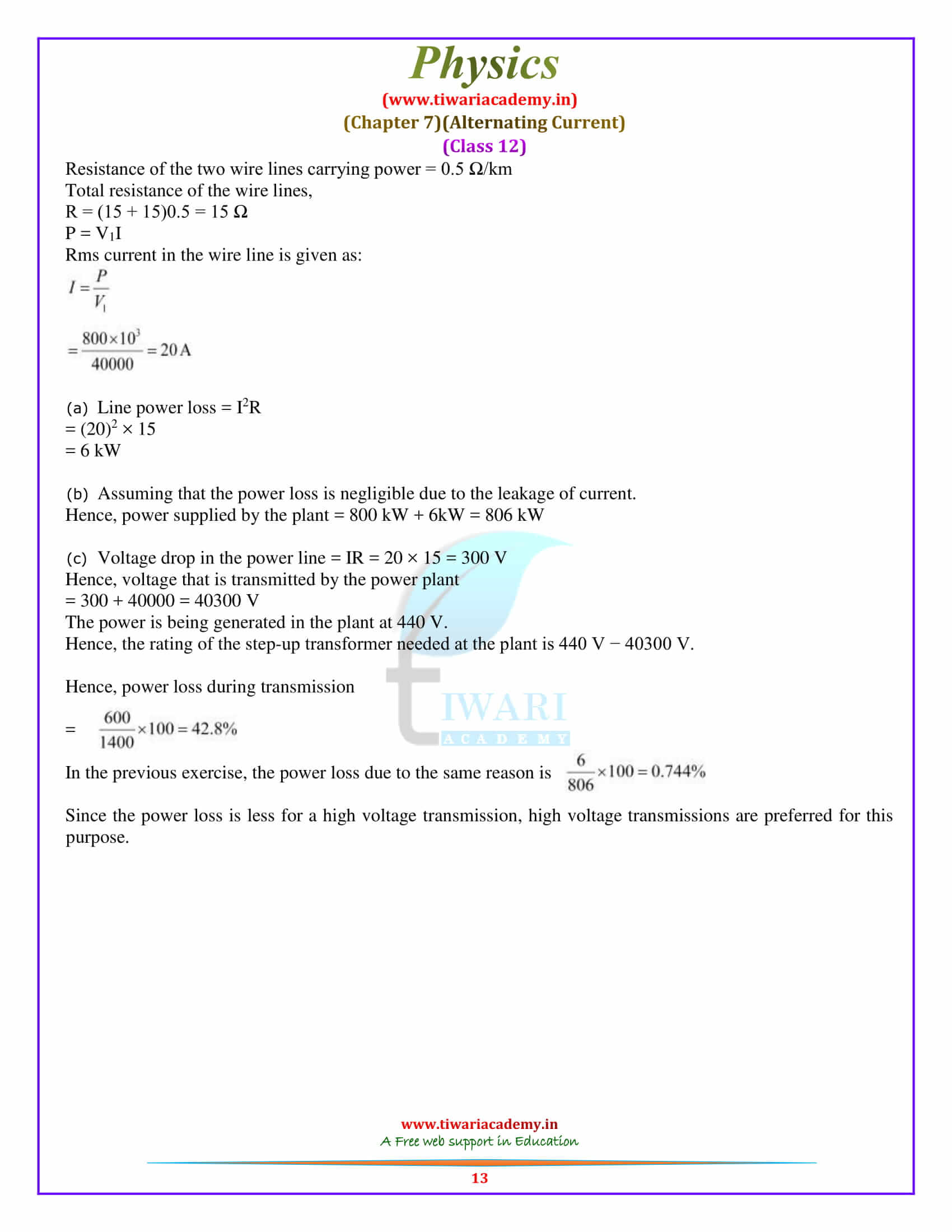NCERT Solutions for Class 12 Physics Chapter 7 Alternating Current in English and Hindi Medium with Additional Exercises for 2025-26. The question answers and solutions of chapter 7 class 12th Physics is modified according to new textbooks published by NCERT for academic year 2025-26 exams.
Viva Voice for Class 12 Physics
How to Prepare for Class 12 Physics Exam
Study Tips for Class 12 CBSE Board 2025
NCERT Solutions for Class 12 Physics Chapter 7
Chapter 7 Alternating Current Solutions
- Class 12 Physics Chapter 7 Exercises Solutions
- 12th Physics Chapter 7 Additional Exercises (Not in Syllabus)
- Class 12 Physics Chapter 7 Solutions in Hindi
- Class 12 Physics NCERT Book Chapter 7
- Class 12 Physics Revision Book Chapter 7
- Revision Book Answers
- Class 12 Physics Chapter 7 Revision Notes 1
- Class 12 Physics Chapter 7 Revision Notes 2
- Visit to 12th Physics Main Page

| Class: 12 | Physics |
| Chapter 7: | Alternating Current |
| Content: | Study Material and Exercises Solutions |
| Academic Session: | 2025-26 |
| Medium: | Hindi and English |
Class 12 Physics Chapter 7 Solutions in English
NCERT Solutions for Class 12 Physics Chapter 7 Alternating Current exercises are given here to use it online or download in PDF form free for new academic session 2025-26. Ask your doubts for NIOS Board and CBSE through discussion forum. Download Offline Apps based on NCERT Books following the latest CBSE Syllabus 2025-26.

Important Questions for practice
1. What is the magnitude of magnetic force per unit length on a wire carrying a current of 8A and making an angle of 30° with the direction of a uniform magnetic field of 0.15T?
2. A straight wire of mass 200g and length 1.5 m carries a current of 2A. It is suspended in mid-air by a uniform horizontal magnetic field B. What is the magnitude of the magnetic field?
3. In a series C–R circuit, applied voltage is V = 110 sin 314t volt. What is the (i) The peak voltage (ii) Average voltage over half cycle?
4. A power transmission line feeds input power at 2400 V to a step down ideal transformer having 4000 turns in its primary. What should be number of turns in its secondary to get power output at 240V?
5. A series C–R circuit consists of a capacitance 16 mF and resistance 8Ω. If the input a.c. voltage is (200 V, 50 Hz), calculate (i) voltage across capacitor and resistor. (ii) Phase by which voltage lags/leads current.
Questions from Board Papers
1. The self inductance of the motor of an electric fan is 10H. What should be the capacitance of the capacitor to which it should be connected in order to impart maximum power at 50Hz?
2. An applied Voltage signal consists of a superposition of DC Voltage and an AC Voltage of high frequency. The circuit consists of an inductor and a capacitor in series. Show that the DC signal will appear across C where as AC signal will appear across L.
3. A sinusoidal e.m.f. device operates at amplitude E0 and frequency v across a purely (1) resistive (2) capacitive (3) inductive circuit. If the frequency of driving source is increased. How would (a) amplitude E0 and (b) amplitude I0 increase, decrease or remain same in each case?
4. Write an expression for the force experienced by a charged particle moving in a uniform magnetic field B. With the help of diagram, explain the principle and working of a cyclotron. Show that cyclotron frequency does not depend on the speed of the particle.
5. If the current sensitivity of a moving coil galvanometer is increased by 20% and its resistance also increased by 50% then how will the voltage sensitivity of the galvanometer be affected?
Important Questions on 12th Physics Chapter 7
A 100 Ω resistor is connected to a 220 V, 50 Hz ac supply. What is the rms value of current in the circuit?
Resistance of the resistor, R = 100 Ω, Supply voltage, V = 220 V, Frequency, ν = 50 Hz The rms value of current in the circuit is given as I = V/R = 220/100 = 2.20 A
The peak voltage of an ac supply is 300 V. What is the rms voltage?
Peak voltage of the ac supply, Vo = 300 Vrms voltage is given as: V = Vo/√2 = 300/√2 = 212.1 V
In any ac circuit, is the applied instantaneous voltage equal to the algebraic sum of the instantaneous voltages across the series elements of the circuit? Is the same true for rms voltage?
Yes; the statement is not true for rms voltage It is true that in any ac circuit, the applied voltage is equal to the average sum of the instantaneous voltages across the series elements of the circuit. However, this is not true for rms voltage because voltages across different elements may not be in phase.
A capacitor is used in the primary circuit of an induction coil.
High induced voltage is used to charge the capacitor. A capacitor is used in the primary circuit of an induction coil. This is because when the circuit is broken, a high induced voltage is used to charge the capacitor to avoid sparks.
An applied voltage signal consists of a superposition of a dc voltage and an ac voltage of high frequency. The circuit consists of an inductor and a capacitor in series. Show that the dc signal will appear across C and the ac signal across L.
The dc signal will appear across capacitor C because for dc signals, the impedance of an inductor (L) is negligible while the impedance of a capacitor (C) is very high (almost infinite). Hence, a dc signal appears across C. For an ac signal of high frequency, the impedance of L is high and that of C is very low. Hence, an ac signal of high frequency appears across L.
A choke coil in series with a lamp is connected to a dc line. The lamp is seen to shine brightly. Insertion of an iron core in the choke causes no change in the lamp’s brightness. Predict the corresponding observations if the connection is to an ac line.
If an iron core is inserted in the choke coil (which is in series with a lamp connected to the ac line), then the lamp will glow dimly. This is because the choke coil and the iron core increase the impedance of the circuit.
Why is choke coil needed in the use of fluorescent tubes with ac mains? Why can we not use an ordinary resistor instead of the choke coil?
A choke coil is needed in the use of fluorescent tubes with ac mains because it reduces the voltage across the tube without wasting much power. An ordinary resistor cannot be used instead of a choke coil for this purpose because it wastes power in the form of heat.
